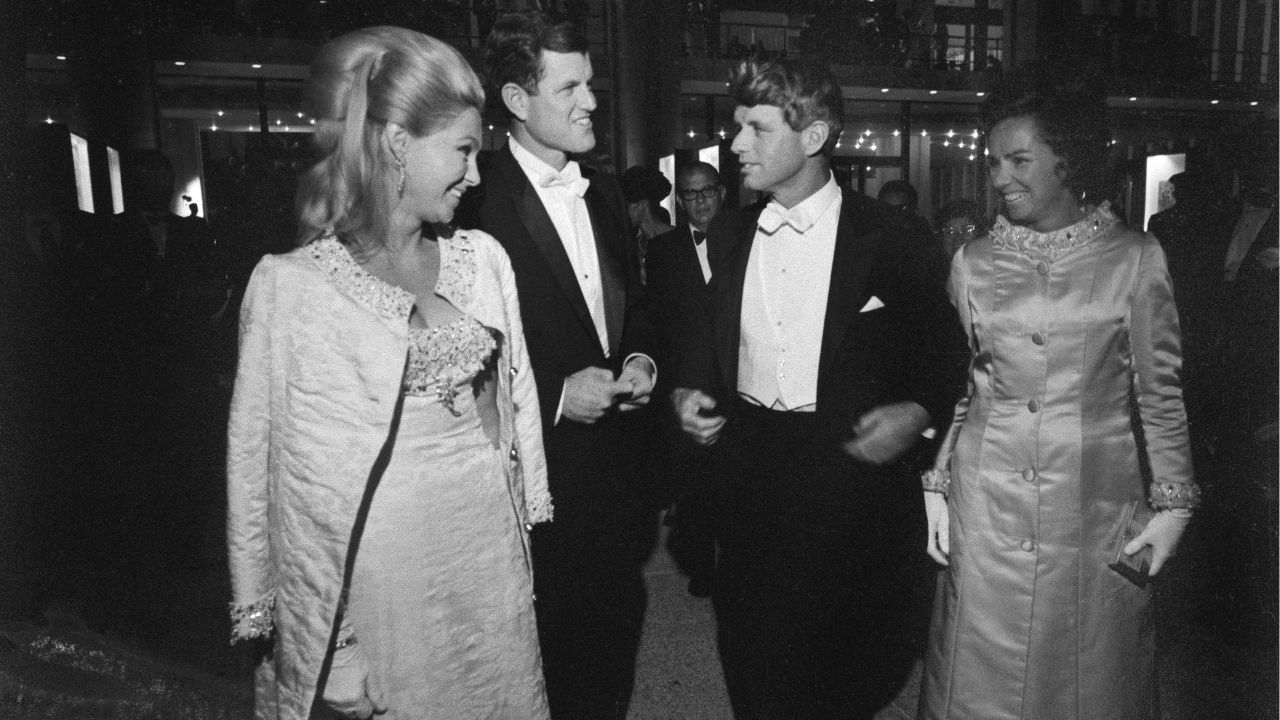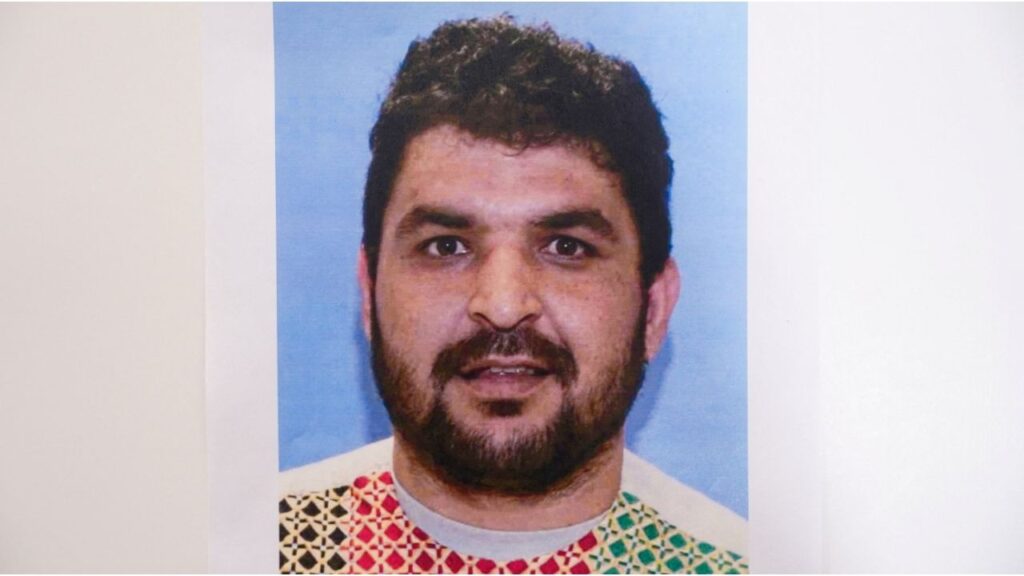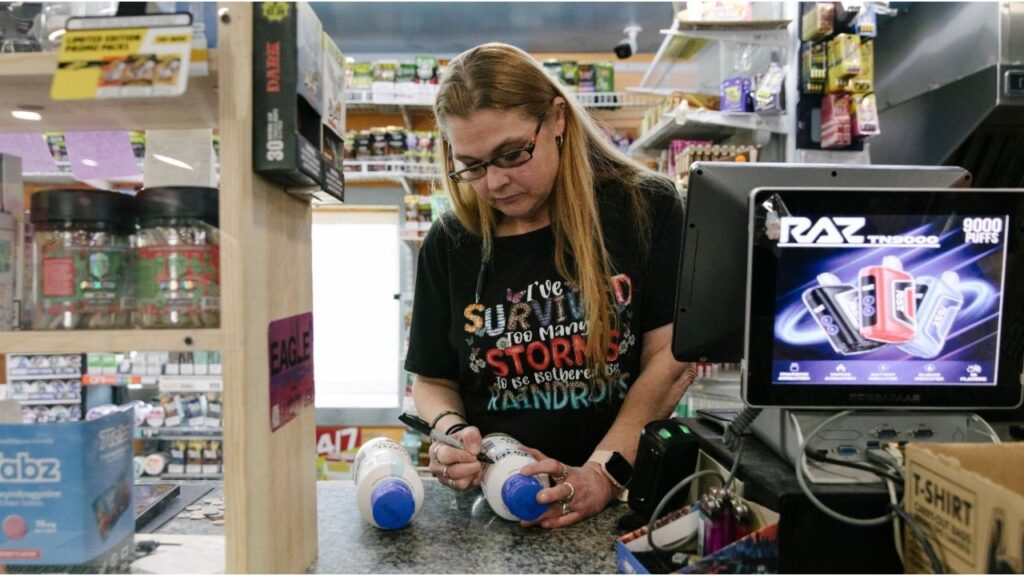Joan Kennedy, left, with her husband at the time, Edward Kennedy, and Robert F. Kennedy and Ethel Kennedy at Metropolitan Opera opening at Lincoln Center in New York, Sept. 16, 1966. Joan Kennedy, who married into one of America’s foremost political dynasties and spent much of her life wrestling with alcoholism while caught up in the tragedies and tempests that stamped the Kennedy family, died on Wednesday, Oct. 8, 2025, at her home in Boston. She was 89. (Allyn Baum/The New York Times)

- Joan Kennedy, the shy and talented pianist who married into America’s storied political dynasty, died Wednesday in Boston at 89.
- Once a promising musician, Joan Kennedy’s life became defined by personal struggles, political scandal and the burdens of Camelot.
- Married to Sen. Ted Kennedy, she endured infidelity, public scrutiny and lifelong battles with alcoholism amid family tragedy.
Share
|
Getting your Trinity Audio player ready...
|
Joan Kennedy, who married into one of America’s foremost political dynasties and spent much of her life wrestling with alcoholism while caught up in the tragedies and tempests that stamped the Kennedy family, died Wednesday at her home in Boston. She was 89.
Her death was confirmed by Steve Kerrigan, the chair of the Massachusetts Democratic Party. He did not cite a cause.
The former wife of Sen. Edward M. Kennedy, who was known as Ted, Joan Kennedy was shy and reserved compared with her competitive, athletic and often boisterous in-laws. Ill-prepared for life in the reflected glare of Kennedy klieg lights, and haunted by her own family history of alcoholism, she found herself caught up in high-stakes politics, a faithless marriage and an on-again, off-again struggle with her own drinking.
For stretches at a time, however, she registered numerous triumphs. An accomplished pianist, she gave a recital with the Philadelphia Orchestra in 1970 that won standing ovations and stellar reviews. Under the baton of Arthur Fiedler, she narrated stories, like Sergei Prokofiev’s “Peter and the Wolf,” accompanied by the Boston Pops. She published a book, “The Joy of Classical Music: A Guide for You and Your Family” (1992), edited by her sister-in-law, Jacqueline Kennedy Onassis. And she devoted her later years to raising money for nonprofit organizations and charities in Boston.
But she was never interested in politics, the Kennedy family business. Her introduction to it came when her husband campaigned for and won a special election to the Senate in 1962, when he was just 30 and she was 27. By then, his brother John was president, and his brother Robert was attorney general.
Within a few years, though, with the assassinations of John and Robert, pressure built on Ted Kennedy to take up their mantle despite his family’s concern for his safety. He became less discreet about his infidelities and excessive drinking, and Joan, too, turned increasingly to alcohol.
She stood by her husband through considerable drama, most notably in 1969, when he drove off a one-lane bridge in Chappaquiddick, Massachusetts, in an accident that killed his passenger, Mary Jo Kopechne, a 28-year-old former secretary to Robert F. Kennedy, when he was a senator from New York.
Joan Kennedy, who was pregnant at the time, had already suffered two miscarriages and was on strict bed rest. With the Chappaquiddick drama threatening her husband’s political future, she accompanied him to Kopechne’s funeral and to court, where he pleaded guilty to leaving the scene of an accident.
Shortly afterward, she miscarried again. By then, she said, she had given in to the bottle.
“For a few months everyone had to put on this show, and then I just didn’t care anymore,” Kennedy told Laurence Leamer, author of “The Kennedy Women” (1994). “That’s when I truly became an alcoholic.”
She and Ted Kennedy had effectively separated before he ran for president unsuccessfully in 1980, but they kept up a united front during his campaign for the Democratic nomination; after he dropped out, the marriage officially dissolved.
Her struggle with alcohol had become public with her repeated arrests on charges of drunken driving, starting in 1974. With her third arrest, in 1991, she was ordered into a rehabilitation program, the first of several times.
Over time, she had consumed enough alcohol to develop serious kidney problems and to have her children become her guardians.
—
This article originally appeared in The New York Times.
By Katharine Q. Seelye/Allyn Baum
c. 2025 The New York Times Company
RELATED TOPICS:
Categories

At Least 83 Dead in Hong Kong Apartment Fire


















